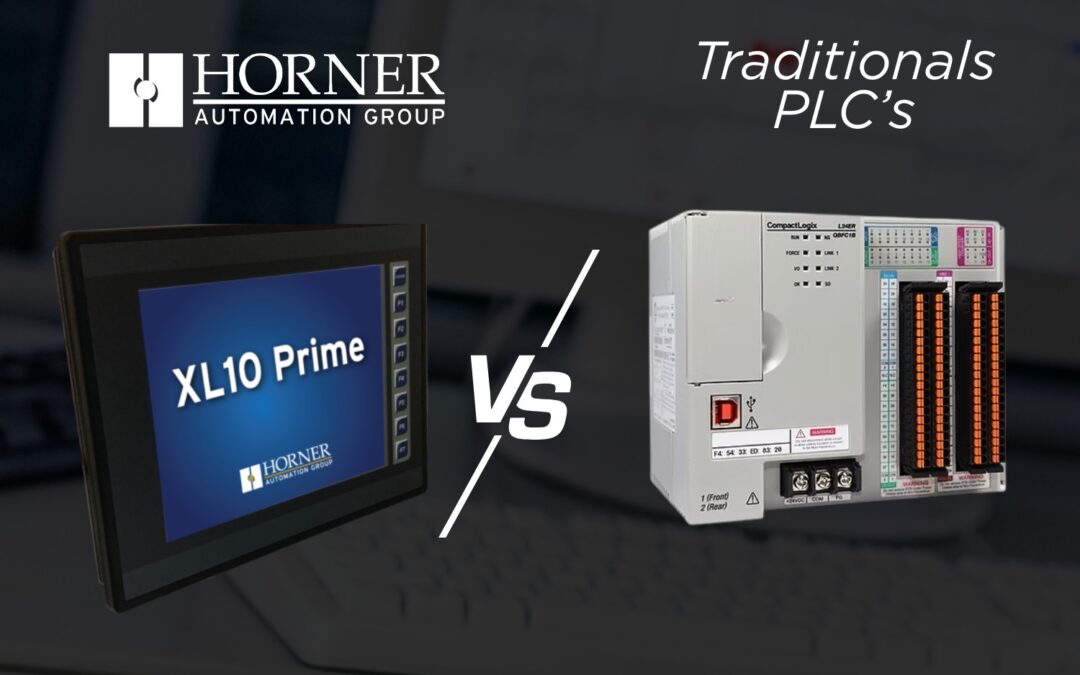Horner vs Traditional PLCs (Siemens, Allen-Bradley, etc.)
When we think of industrial automation, the first names that usually come to mind are Siemens, Allen-Bradley, Schneider, Mitsubishi, and other major brands that dominate the market of traditional PLCs.
However, in recent years, Horner has positioned itself as an interesting alternative. Its devices combine control, HMI, and connectivity in a single unit, which means fewer complications, less cabinet space, and—most importantly—lower implementation costs.
In this article, we compare Horner vs traditional PLCs to highlight their advantages and best use cases.
1. Architecture and Simplicity
Traditional PLCs
Require a PLC, an HMI, and sometimes additional communication modules.
This leads to larger cabinets and more components to integrate.
Horner
Combines PLC + HMI + communications in one unit.
Reduces wiring, potential failure points, and simplifies installation.
💡 For compact or mid-sized automation projects, Horner’s simplicity can save a lot of time and effort.
2. Programming and Software
Siemens / Allen-Bradley
Their programming environments are robust but expensive.
Require paid licenses and significant training hours.
Horner
Offers Cscape (CCE) software for free, which is relatively easy to use.
Lower learning curve, ideal if your team is not specialized in multiple platforms.
✅ If you need speed and cost savings, Horner stands out.
❗ For advanced functions and if your team already masters TIA Portal or Studio 5000, traditional PLCs might be the better choice.
3. Scalability and Robustness
Traditional PLCs
- The go-to choice for large-scale projects with thousands of I/Os and complex integration needs.
Horner
Designed for small to medium-sized projects.
Models like the XL Prime already provide a decent level of scalability.
⚡ In full-scale plants, Siemens and Allen-Bradley remain the leaders.
🚀 But for individual machines, compact systems, or quick integrations, Horner shines.
4. Costs and Implementation Time
Traditional PLCs
- Costs rise quickly due to licenses, additional modules, HMIs, and programming hours.
Horner
Requires less hardware.
Free software.
Shorter commissioning times.
💡 If your goal is cost control and quick deployment, Horner is hard to ignore.
Conclusion: Horner or Traditional PLC?
The right choice depends on your project:
🔹 Traditional PLCs (Siemens, Allen-Bradley, etc.) are ideal for large-scale robustness, complex integration, and when you already have an expert team.
🔹 Horner is best for practical, compact, cost-effective solutions with faster implementation.
At CTQ, we’ve seen many engineers try Horner and be impressed by its ease of use and results.
👉 It’s not about completely replacing the industry giants, but about choosing the right tool for each challenge.
Want to Implement Horner in Your Automation Projects?
At CTQ, we help you find the best PLC solution for your needs.
📩 Contact us today and discover how to optimize your next automation project.


